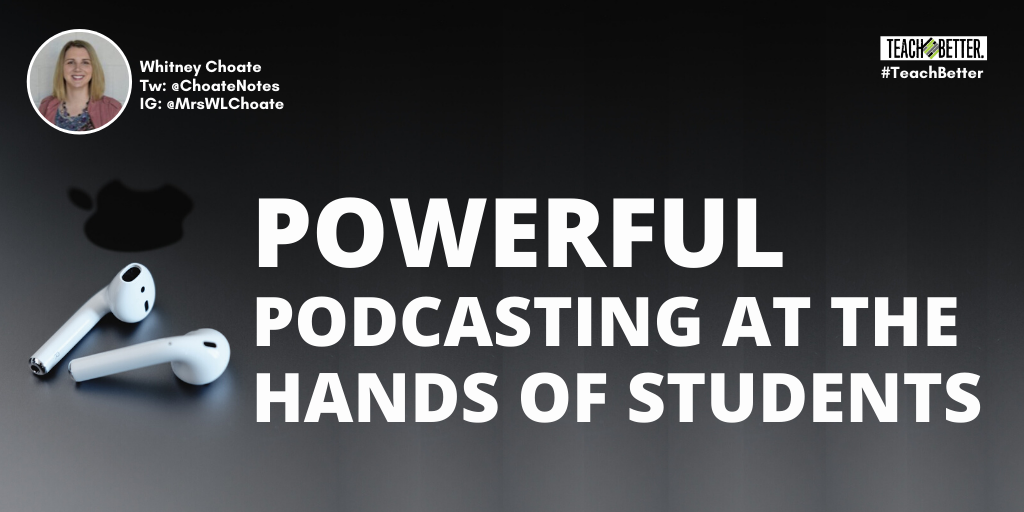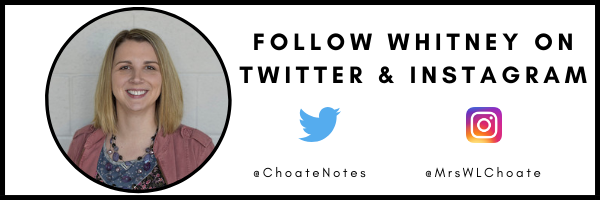TL;DR:
- How podcasting can benefit student engagement AND meet content standards.
- Basic tips for starting a podcast with your students.
Why Podcast with Students
According to George Washington University, “Students who said they aren’t that motivated at the beginning of class score higher on tests when they listen to podcasts featuring content.” Besides being a fun and engaging way for students to learn, podcasting meets the needs of diverse learners, improves speaking and listening skills, and meets state and national standards. You can’t top that!
Besides being a fun and engaging way for students to learn, podcasting meets the needs of diverse learners, improves speaking and listening skills, and meets state and national standards. Click To TweetIn regards to national standards, podcasting meets all the criteria with the ISTE Standards: creativity, collaboration, communication, and critical thinking.
Students must use active listening through the entire process of creating their podcasts. Through the most basic concept of podcasting, students communicate their thoughts and ideas.
Students’ creativity is utilized when they apply their knowledge of a subject through audio. The way the content is delivered to the audience is unlimited with the use of their content knowledge, but also with extras such as music and sound effects.
While creating their podcast, students can collaborate with others for the creation. They can listen and respond to feedback after their audience has listened. Students listening to other podcasts within their class can offer insight as well.
Finally, students are forced to critically think while creating original content to communicate with their audience.
While meeting all the ISTE standards during the podcasting process, students’ engagement will be higher! This is a cutting edge use of technology and something completely different from the typical slide presentation, lecture, or worksheet activities.
Captivate your students! Especially the ones who aren’t typically engaged. Watch as your students gain confidence in this form of public speaking. It’s a great stepping stone to presenting in front of the class or a larger audience.
How to Podcast with Students
The podcasting process is similar to the writing process and involves planning, recording, editing, and publishing. With each of these steps, different equipment and resources are needed, but don’t let that scare you off. Podcasting can be done with zero out-of-pocket expenses.
Prior to recording, students need to plan their podcasts. This could be in any format, from outlines, to bullets, to writing out every word that they are going to say. Base this off of where your students are developmentally, their amount of knowledge and comfort with the subject matter, and the end goal you set for their project. If you are already writing an outline for a research paper, have the students work off that so the conversation comes more fluidly rather than them reading their final draft of that paper. Check out this podcast organizer by Josh Howard for inspiration.
To record, there are numerous free and paid apps and programs. If your school has Chromebooks, students can easily record with Screencastify or Soundboard. Students could even make Google Slides and record the audio through there. Other apps and websites include Audacity, Sound Trap, Synth, and podOmatic. Podbean also lets the user record right on their app, but you cannot edit the recording.
What About Equipment?
If you search Google for podcasting equipment, you might think you need hundreds of dollars of fancy microphones and sound absorption products. Don’t go down that rabbit hole! The most basic podcasting can be done on any computer, Chromebook, or smartphone.
Students can use the voice memo or Grarageband apps with the device’s built-in microphone. The sound quality won’t be professional, but that’s okay! If you want to up your game a bit, any $20 microphone from Amazon will help. You may also want to add a pop-filter or foam cover for your mic to help reduce wind, spittle, or background noise. These can be anywhere from $3-20.
If you want a sound booth or a solution to reduce echo, the easiest and (fairly) cheapest way is to take a box or Rubbermaid container and line it with carpet or foam, such as the egg-crate foam used for bedding. These could be used for student videos, such as Flipgrid, or any sort of audio recording. Students can place the mic inside the box and speak into it there. If students are recording at home, they can go into a closet or make a pillow fort; it’s fun, yet functional!
The main purpose of podcasts is to share the product with an audience which can be done in a variety of ways. The audio file could be shared in Google Classroom, along with class or school newsletters and websites. If you have an account on a podcasting host site such as Anchor or Podbean, the podcasts can be shared with the general public and audiences around the world.
However you choose to incorporate podcasting into your classrooms, your students are sure to enjoy this engaging, tech-based learning activity.
Resources
Podbean: Create an Education Podcast. It is Free
GarageBand Tutorial for Podcasters: How to Setup, Record, and Edit
Create a class podcast with Anchor
[scroll down to keep reading]ABOUT WHITNEY CHOATE
Whitney Choate is currently in her ninth year as a secondary special education teacher and is also an instructional technology specialist at Cape Central High School in Cape Girardeau, Missouri. She earned her Bachelor’s degree in Learning and Behavioral Disorders and a Master’s degree in Autism. She has a passion for teaching and mentoring learners of all ages. Whitney is also the co-host of the Tough Talk with Teachers Podcast.




